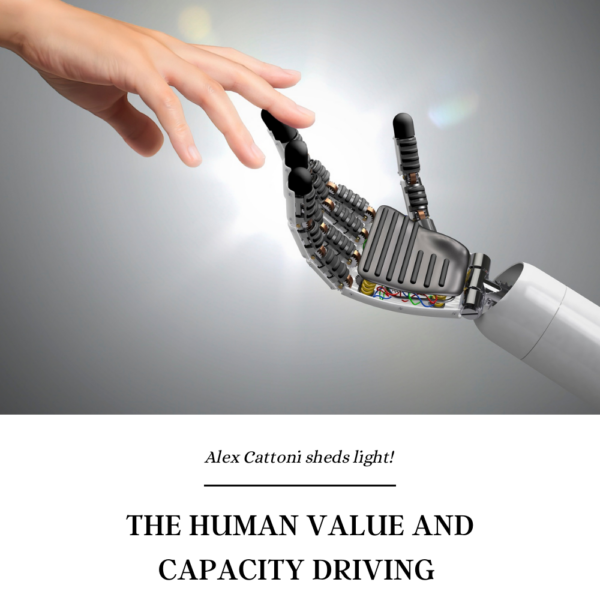What makes for effective crisis communication?
An alarming upswing in disasters worldwide is being experienced: be it weather, war or warnings being sounded about humanitarian crises, etc. people are being pummelled with it. But are we prepared for it as solopreneurs and small business owners? The challenge is whether we will know how to handle it, and, if need be, through effective crisis communication.
A recent tragedy affecting a local Thai woman really gripped my heart – it was genuinely nightmarish. On 29 June 2023, a 57-year old Thai local Supannie Kittirattana’s life irrevocably changed in matter of seconds. Her leg was gobbled up by a travelator or moving walkway: a commonplace feature of modern airports. A horror story if ever there was one.
In the past, most tourists would never even have batted an eyelid about this piece of equipment and would rarely question its mechanics. But since then, this has struck terror in many a traveller’s heart.

Tragedy unfolds
The Daily Mail reported the tragic unfolding of the incident.
“She screamed in horror as her foot became stuck in the metal gap while the machinery churned through her muscle, tendons and bones.
“Onlookers fumbled to turn off the emergency switch as the machine continued tearing through her flesh – spewing blood onto the metal tracks.
“Paramedics amputated her leg on-site at the airport in order to free her from the travelator before she was carried out on a stretcher – with her foot in a foam box loaded into the ambulance.”
While the South China Morning Post provided her name and other details as follows: “Supannie Kittirattana’s leg became trapped on a travelator in the airport’s Terminal 2 before her flight to Nakhon Si Thammarat in southern Thailand. Doctors at the scene had to amputate her lower left leg, including the knee.”
All-important statement
There was an immediate statement from airport authorities in a press conference to address the tragedy. This is the gist of the statement according to the Independent:
“On behalf of the Don Mueang International Airport, I’d like to express my deepest condolences regarding the accident,” Don Mueang airport director Karun Thanakuljeerapat said during a news conference. “I’d like to insist that we will ensure that no such accident will happen again.”
“He said the airport will be fully responsible for the woman’s medical costs and will be open for negotiations or other compensations. The medical team at the hospital she was initially sent to informed Karun that they could not reattach her leg, but the woman requested to be transferred to another hospital to assess the possibility, he said.”
Furthermore, it must be noted that the airport director had also reportedly visited a likely devastated Supannie in hospital. The Online Citizen reported the following:
“The director and management of Don Mueang Airport have visited the patient to monitor her treatment and received updates from the medical team at Bhumibol Hospital, who reported that she is currently undergoing treatment. We are deeply saddened by the incident and are fully committed to assuming responsibility, as well as covering all her medical expenses and providing compensation.”
This brave mother’s battle to some sort of recovery and normality will probably be long and fraught with difficulty. However, the incident was handled well from the standpoint of crisis communication.

Analysis
After some analysis, the statement and sentiments seem spot on as these met the criteria generally recommended by experts. The most pertinent ones are as follows:
- It was handled swiftly.
- It had the right tone as they immediately expressed condolences – very remorseful.
- People of the highest authority took responsibility and outlined action.
- The communication was clear – no ambiguity about compensation and medical costs.
- It was short but responsive to the need.
- List It bolstered their reputation.
Worth noting
- The team had taken a plan of action to address the tragedy in lightning-quick speed despite no known precedent for such a disaster of this scale.
- The highest priorities were identified and quickly executed.
- High-ranking officials did not negate responsibility.
- A press conference was an appropriate way to communicate as the incident happened at the airport and the press conference lent itself to reporters as well as any stakeholders to hear the message from the horse’s mouth. It could then be circulated via social media, where there was already some hysteria due to the nature of the accident.
According to an excerpt of the Harvard Business Review quoted below, which informs leaders of how to handle things in a crisis – this team did a commendable job.
“The situation is changing by the day — even by the hour. The best leaders quickly process available information, rapidly determine what matters most, and make decisions with conviction. During a crisis, cognitive overload looms; information is incomplete, interests and priorities may clash, and emotions and anxieties run high.”
Seemingly, the leaders remained calm and assessed the situation and determined appropriate outcomes. However, that said, communication during a crisis is not done in a vacuum – a team normally needs to analyse its immediate business ecosystem and economic environment in order to make sometimes swift decisions about the appropriate course of action. It would also need to assess risk to major stakeholders and partners.
Possible factors considered
In this case, there are four factors that have emerged subsequently that, I believe, were probably factored in.
- Thailand is recovering from the pandemic that had decimated the tourism industry worldwide: it is a tourism hotspot and its recovery was well under way.
- The airport was scheduled to replace travelators in 2025 anyway.
- There had been relatively minor incidents previously, one taking place at the airport days before the event.
- Maintenance in Thailand is an issue and the airport is old.

Recovery to pre-pandemic levels
The Daily Mail reported that “State-owned Airports of Thailand (AOT) runs the facility and the company is reportedly ‘the most-valuable airport operator in the world’ due to the country’s popularity as a tourism destination and its rapidly growing domestic economy.”
In the light of this, the response by Airports of Thailand (AOT)becomes even more important.
The South China Morning Post reported as follows: “Following the incident, Thailand’s airport authority immediately ordered a safety check on all moving walkways at its hubs and formed a panel to look into the episode.”
However, the police expressed frustration due to lack of access to the CCTV footage. “The delay is weighing on the government’s hopes for a swift conclusion of the investigation to safeguard the tourism sector’s image.
The action it planned to take in the immediate aftermath was outlined in the Bangkok Post as follows:
- “The AoT apologised for the incident and will cover all medical and compensate the victim for her injuries.
- Authorities will also launch a probe to determine whether the incident was caused by a malfunction or negligence.”
Airport due to replace travelators in 2025
The Bangkok Post further reported that “The travellator in question, he said, had just been inspected as part of a routine maintenance process on June 21 before adding that checks are carried out every three months.”
It also mentioned that the “AoT had been planning to upgrade all moving walkways inside the airport by 2025, but the plan will be moved up to the next fiscal year in light of the accident, he said.”
Previous incidences
The Daily Mail, once again, reported, “A similar incident happened in 2019 when a passenger’s rubber Crocs were dragged into a travelator at the same airport. The victim said that if he did not take off his shoe in time, his foot would have been sliced off.”
A little boy had also had a similar experience at this airport as reported by The Thaiger.
“Ten days prior to the incident involving a woman losing half of her leg at Don Mueang International Airport in Bangkok, a young boy experienced an escalator mishap that resulted in his foot getting trapped underneath. Fortunately, the boy made a successful recovery after receiving 11 stitches.”

Thailand’s safety record and maintenance problems
Airways reported that Don Mueang Airport (DMK) is the oldest active airport in Asia. Its history is certainly fascinating and it has seen its share of drama, even experiencing flooding that forced closure for almost a year.
Loyalty Lobby describes itself as a leading source of information for frequent travellers, and it reported that Thailand’s safety record leaves something to be desired as evidence by the comment:
“The accident is just the latest in a long history of escalator accidents in Thailand, where for some reason, they just can’t figure out how to properly maintain safety protocols and technical integrity of installations such as elevators, escalators, and moving walkways (among others). It isn’t the first time that such as accident has happened, in fact, local media in Thailand frequently reports about people who have such accidents in a similar fashion, and over the years, this has led me to be really paranoid about stepping on escalators.”
It continued: “Maintenance in Thailand is notoriously shoddy and anyone who has ever visited DMK Airport knows about the state of the installations there.”
Investigation concluded
After an investigation, the cause of the accident became known, and truth is indeed stranger than fiction. The cause of the accident? Missing screws. The Phuket News reported as follows:
“Missing screws under a platform of the moving walkway were the cause of the incident at Don Mueang Airport that cost a woman a part of her left leg on June 29, an observer in the fact-finding probe said yesterday (July 7).”
In conclusion, no doubt, we cannot have the final word before mentioning safety when using these mechanisms. This article by traveller and photographer Brain Cohen on his website, The Gate with Brain Cohen, was written in the aftermath of the accident and does a great job of breaking down safety aspects to be observed when using elevators and travelators as well as other useful bits of information.
I learnt lessons applicable to solopreneurs or small businesses from this ghastly tragedy as follows:
- If there are recurrent events like minor injuries, it is best not to ignore these as it may be a precursor for something big. For example, our problems may not have the same scale but for our livelihoods: fatal. As I write this, my laptop has been screaming at me – I had better pay attention before it crashes with all my work.
- A known problem experienced by others before her, not only tripped her up, it devastated Suppannie’s life. Perhaps the lesson for us grinding it out, doing our own thing is that we need to stick to the tasks that seem mundane. It could very well prevent a disaster in the future. Let’s not let minor details like missing screws be the cause of business crises.
- Personally, I also reflected on the social media posts showing her in agony. Links below provide an argument for and against publishing graphic images online in general. As people in this online space, it is a cautionary as we need to be so careful with what we publish.
Points to consider when publishing images
The Star reported about it as follows: “Graphic images published in Thai-language media, and on Facebook, show a young woman in agonising pain struggling to free her leg from a conveyor belt.”
In unspeakable agony, Supannie suffered the indignity of having her photo taken in that horrific situation and it being circulated online. I can only imagine how she must have felt seeing these images and the resultant trauma her friends and family had to endure too. This, in addition to digesting the horror that had beset her.
The victim’s right to privacy versus the public’s right to know
A number of related posts listed below provide a take on how to deal with traumatic events and the victims involved:
1. BBC
‘It follows a growing trend which has raised concern among various groups who have said it is “bad taste” and done for a “reaction”.
‘The biggest worry is family members finding out about incidents online before police get to them.
“Be sensitive. Be aware of what you are uploading to social media. Have a thought to families of victims who may not be aware of what’s happened.”’
“I get it – you want to inform people that an accident/murder/abortion/crime took place. But ask yourself:
1. Is it necessary to share photos of the deceased?
2. Did you ask the deceased’s family for permission to post the photos?”
“Speaking on behalf of the deceased and family members, some argue that these kinds of images victimize the victim again, cruelly compounding the calamity and causing surviving family members ‘indelible trauma’.”
4. Gulf News
“Abu Dhabi: Sharing photos or videos of accident sites and victims through social media could get you into trouble, the UAE Ministry of Interior said on Monday.
“Sharing such images are considered to be irresponsible and disrespectful to the victims, and is punishable under UAE law, the ministry said in a statement.”
Should news outlets show graphic images of mass shooting victims? Researchers and other experts weigh in.
6. TIME
Latest Posts
The human value and capacity driving copywriting in 2025
Big Shift in Copywriting Two days into 2025, my inbox crackled with a tantalising prospect … I had been invited to a masterclass on the subject of a big shift in copywriting. Sorely needed at a time when Artificial Intelligence…
Authenticity, professionalism and hope in a curated world
Unsound fallout After an awkward, deafening silence, a professional saved the day with a raw, authentic performance. The stylish, blonde woman dressed in an eye-catching, form-hugging dress bravely started to sing a capella. Eyes all around United States Capitol Rotunda…
Authentic epiphany watching the trailer for “With love, Meghan”
New Year’s Day marked Meghan Markle’s triumphant return to social media after a considerable hiatus. Her Instagram post showed her breezing into 2025 – hair billowing in the wind, her petite frame ensconced in a lightweight, flowy ensemble. It seemed…
Why Trump 2.0 delivered, and Jaguar not so much
The Internet is awash with disbelief at the latest Jaguar-rebranding exercise, which was roundly panned with most branding it an epic fail. I tend to agree. The advertisement in question is a 30-second seemingly woke fest festooned in bright neon…
9 Websites by women with that extra wow factor!
On 3 March this year, renowned doctor-cum-YouTuber Ali Abdaal tweeted a request for followers to share the best personal websites that they had seen for inspiration and to get his own juices flowing. I volunteered three women with killer websites…
- The human value and capacity driving copywriting in 2025 - March 6, 2025
- Authenticity, professionalism and hope in a curated world - February 6, 2025
- Authentic epiphany watching the trailer for “With love, Meghan” - January 27, 2025













